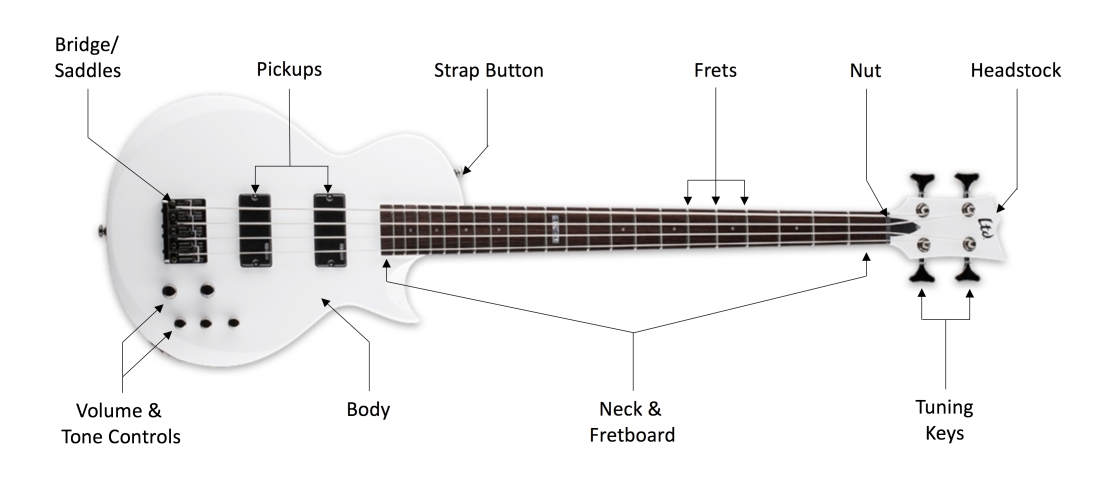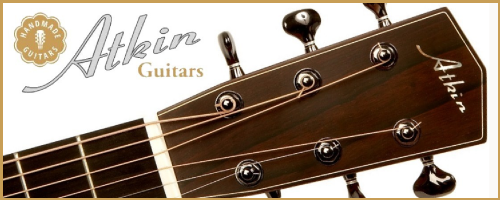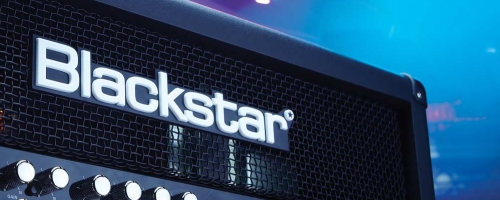A Bass Guitar is similar in appearance and construction to an electric guitar but with a longer neck and usually only 4 strings. Like the electric guitar, the bass guitar has pickups and is plugged into an amplifier and speaker to produce the sound.
In this article you shall be introduced to the components that make up an bass guitar with a brief description of what they do. Components of the Bass Guitar
Components of the Bass Guitar
Headstock -
The main function of the headstock is to house the Tuning Keys.
Tuning Keys -
Also known as machine heads hold the strings at the "head" of the instrument. They are used to tune the instrument by adjusting the tension of the strings and consequentially the pitch of the sound they produce.
Neck -
The neck of the guitar consists of the neck, fretboard, frets, nut and within it is the truss rod. The bending stress on the neck is considerable and tyhe ability of the neck to resist bending is helped by the truss rod (an adjustable metal rod) so the guitar holds a constant pitch.
Fretboard -
Also known as the fingerboard, this is the top covering to the neck that the frets are cut into and strings run over. To play the guitar, the musician presses the strings down onto a fret and fretboard changing the vibrating length of the string.
Body -
The bass guitar has a solid body. Unlike acoustic guitars, the bass guitar has no vibrating soundboard to amplify string vibration. Instead, solid-body basses and guitars have electric pickups and are plugged into an amplifier and speaker to produce the sound.
Volume Control -
This allows the player to adjust the volume that is sent from the guitar to the amplifier.
Tone Control -
This allows the player to adjust the tone that is sent from the guitar to the amplifier.
Strap Button -
This is where a guitar strap can be attached to the instrument.
Bridge -
The bridge on an bass guitar is where the strings are attached to the body.
Pickups -
Unlike an acoustic guitar, bass guitars are usually plugged into an amplifier. The pickups are magnets wound with coils of very fine wire and when the string is played a small small electric current is created that passes through the tone and volume circuits into an amplifier and speaker to produce the sound.
Frets -
Frets divide the neck into fixed segments at intervals related to a musical framework. On a guitar, each fret represents one semitone.
Nut -
The nut supports the strings at the headstock end of the fretboard. It is usually made from hard plastic or bone and has groves cut in it that set the string spacing and height.
Published 17th Feb 2017










